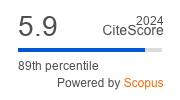Article | Open Access
Friend, Foe or Frenemy? Traditional Journalism Actors’ Changing Attitudes towards Peripheral Players and Their Innovations
| Views: | 4870 | | | Downloads: | 2248 |
Abstract: This study synthesises two analytical frameworks—journalistic strangers and agents of media innovation—to examine how perceptions among newsworkers towards new entrants to their field shape the normalisation of innovations in a digital-first legacy news organisation over three years. Based on two rounds of interviews, it finds that peripheral players are gradually recognised for their contributions to journalism by traditional actors. Nonetheless, as barriers between the two groups lower, tensions involving dissonant professional perspectives, practices, and jurisdictions surface and are negotiated. The findings indicate a growing salience of hybrid roles in newsrooms that serve as linchpins to connect divergent professional fields, and more importantly, as bridges between tradition and innovation. Based on the increasing importance of collaboration and hybrid roles, this study makes a theoretical and practical contribution to research and media management by proposing that four forms of proximity—physical, temporal, professional, and control—are crucial in operationalising the impact that peripheral players have on innovation in news organisations.
Keywords: appropriation of innovation; interlopers; journalism; media innovation; peripheral players
Published:
© Sherwin Chua, Andrew Duffy. This is an open access article distributed under the terms of the Creative Commons Attribution 4.0 license (http://creativecommons.org/licenses/by/4.0), which permits any use, distribution, and reproduction of the work without further permission provided the original author(s) and source are credited.


